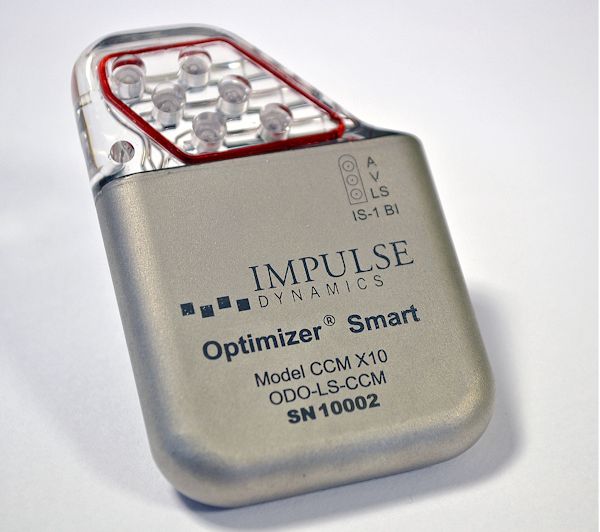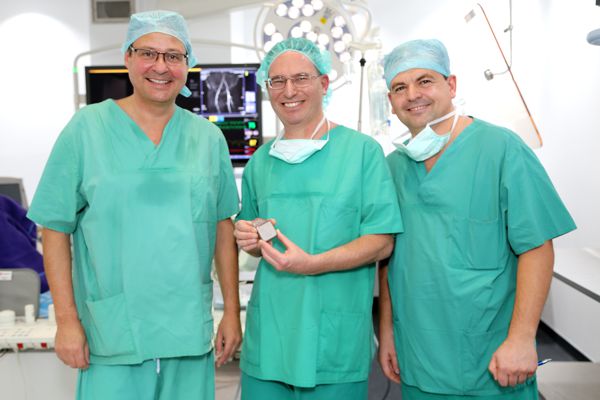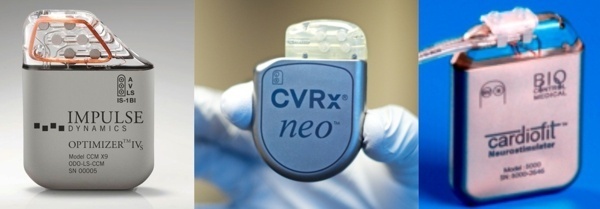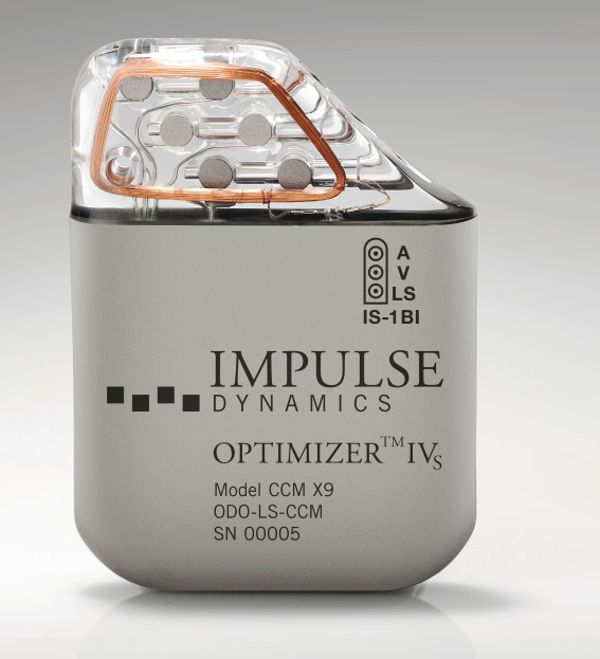
C-MIC Device. Image Credit: Berlin Heals
Berlin Heals recently published results of its open-label randomized controlled trial of its C-MIC device. The study enrolled 70 ambulatory patients (32 C-MIC, 33 control) with non-ischaemic dilated cardiomyopathy with left ventricular ejection fraction (LVEF) of 25%to 35% and New York Heart Association (NYHA) class III–IV.
According to the June 2025 abstract:
“At 6 months, treatment with C-MIC versus control improved LVEF (mean difference: 5.1%; 95% confidence interval [CI] 3.1–7.1%, p < 0.001). The proportions of patients with improvement in at least one NYHA class (risk difference: 68.9%; 95% CI 50.6–87.2, p < 0.001), an increase of ≥5 points in KCCQ-OSS (risk difference: 60.0%; 95% CI 42.3–77.6, p < 0.001), and an increase of ≥30%in 6MWD (risk difference: 38.3%; 95% CI 14.4–62.2) were substantially higher in the device versus control group(p < 0.002).”
In June, Berlin Heals also reported on the 2-year follow-up of patients from the initial C-MIC pilot study who were alive at 6 month as follows:
“Of the 10 patients enrolled in the initial study, 7 were enrolled in follow-up (mean age 52.4 ± 7.6 years, NYHA Class III and mean LVEF 31.7 ± 3.7%). No device-related adverse events occurred. One non-cardiac, non-device related death was reported at 18 months. Improvement in LVEF of 11.60% [95% confidence interval (CI): 5.64–17.56, P < 0.001] from baseline to 6 months was maintained at 2 years post-C-MIC deactivation, with a sustained increase of 12.56% from baseline (95% CI: 4.67–20.45, P = 0.002). Similarly, the 6 min walk distance improved by 206.35 m at 6 months (95% CI: 161.32–251.39, P < 0.0001) and remained at 191 m above baseline at 2 years (95% CI: 131.83–250.99, P < 0.0001). Improvements in NYHA functional class and SF-36 quality-of-life scores observed at 6 months were also preserved throughout the 2 year follow-up. One patient required C-MIC reactivation.”


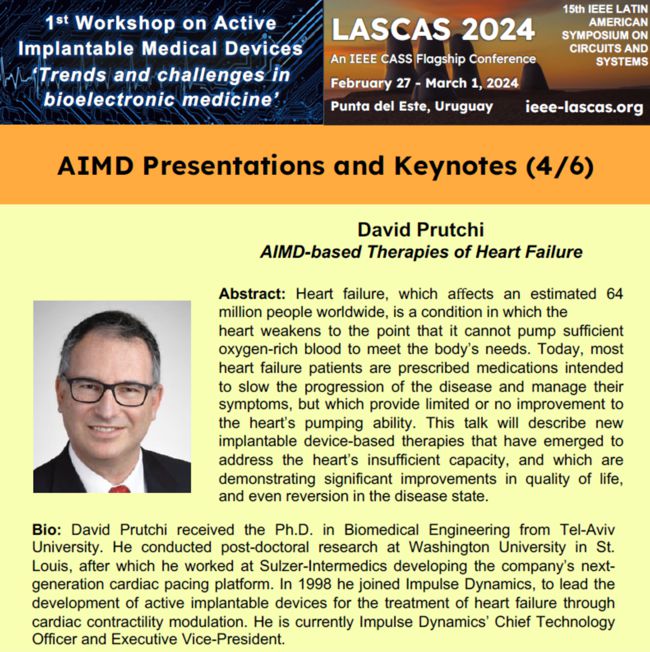

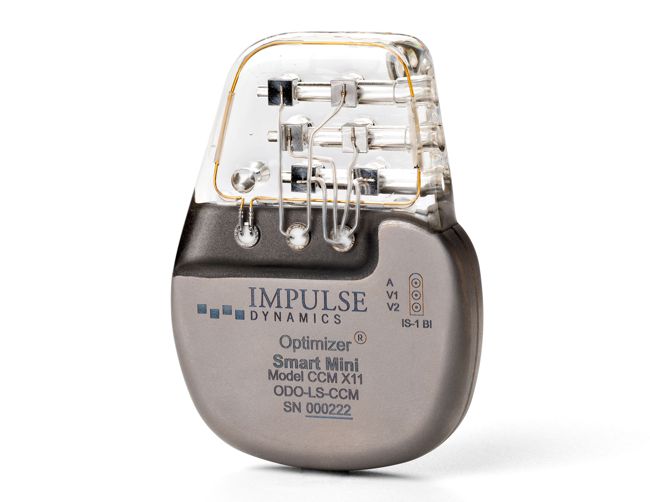
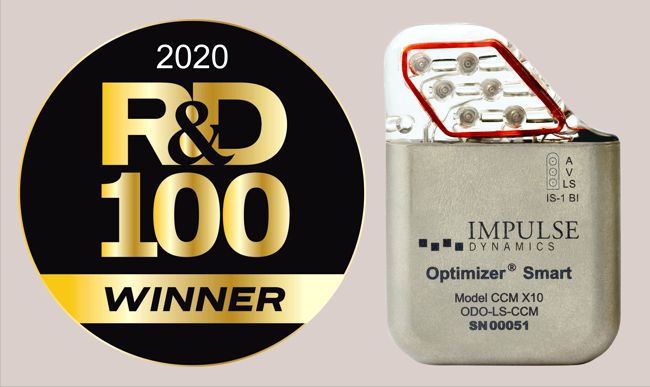
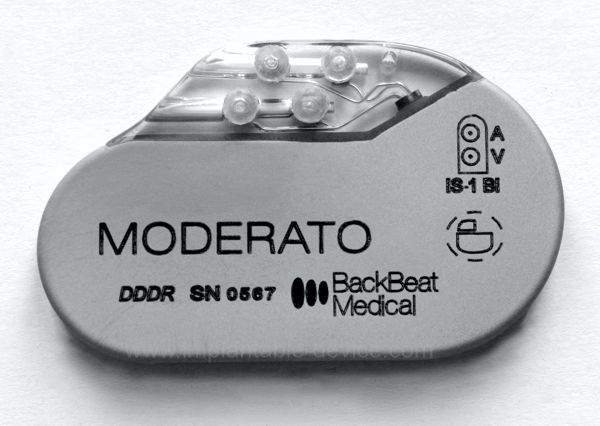

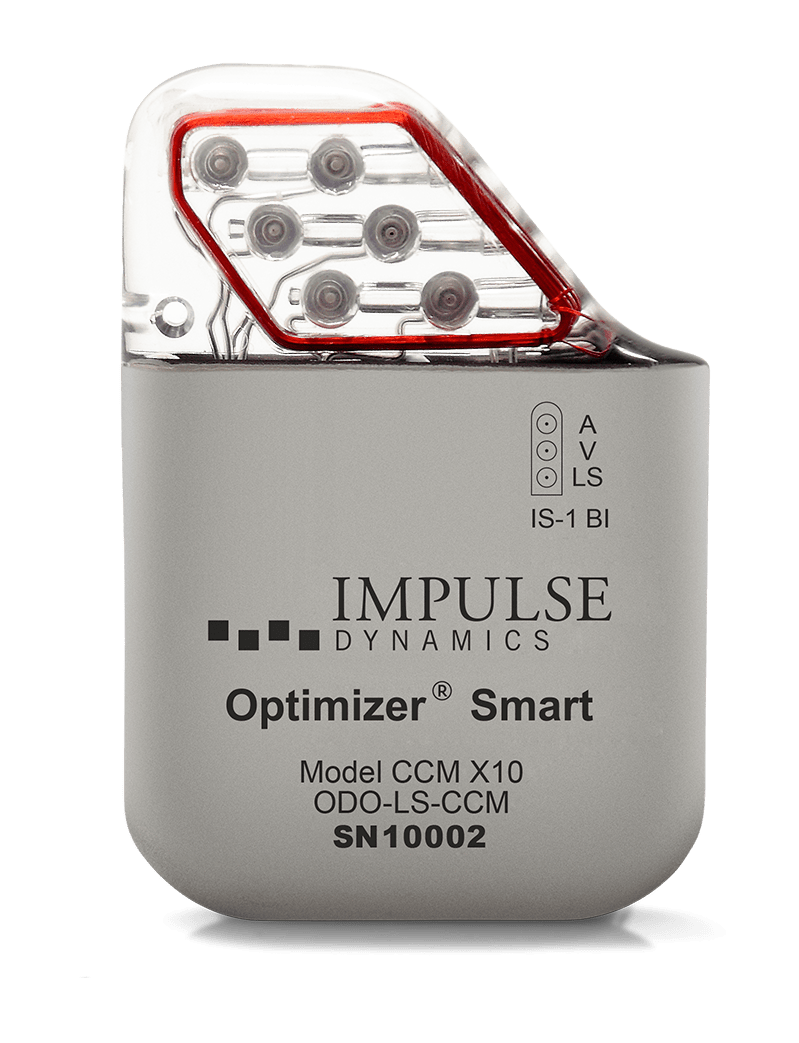 I have led the development of devices to deliver CCM™ therapy from the very beginning, so it is with great pleasure and pride that I share with you the exciting news that Impulse Dynamics just received approval from the United States Food and Drug Administration (FDA) for our Optimizer® Smart System for heart failure patients! An official FDA announcement was made through the publication of a press release that you can find here:
I have led the development of devices to deliver CCM™ therapy from the very beginning, so it is with great pleasure and pride that I share with you the exciting news that Impulse Dynamics just received approval from the United States Food and Drug Administration (FDA) for our Optimizer® Smart System for heart failure patients! An official FDA announcement was made through the publication of a press release that you can find here: 